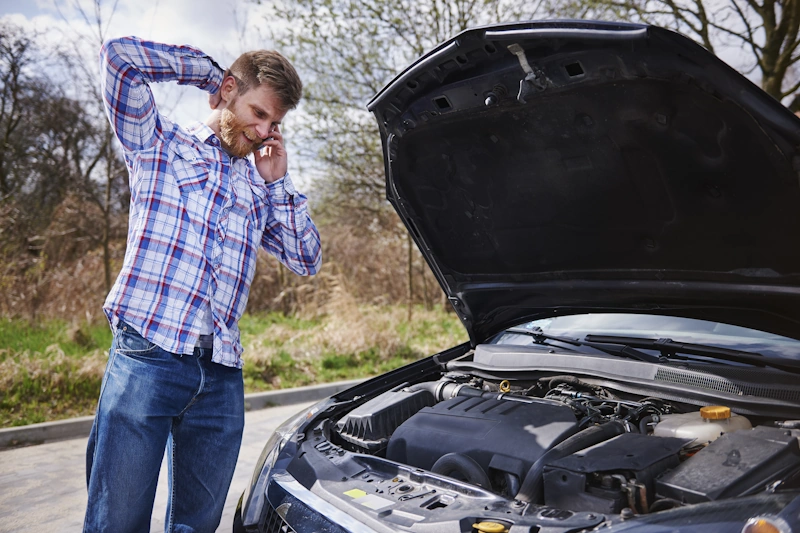The transmission is a vital component of your vehicle that transfers power from the engine to the wheels, allowing you to change gears and control your speed. Over time, wear and tear or other issues can lead to transmission problems.
Recognizing the signs of a failing transmission early on can help prevent further damage and save you from costly repairs. Here are some common signs your transmission is going out:
Delayed or Slipping Gears
One of the most noticeable signs your transmission is going out is a delay or hesitation when shifting gears. You may experience a delay in acceleration or notice that the engine revs, but the vehicle doesn’t move forward smoothly. Additionally, you might feel the gears slipping, where the transmission fails to stay in the selected gear, causing a loss of power or jerky movements.
Rough or Noisy Shifting
One of the other signs your transmission is going out is rough shifting between gears. You may feel a jolt or hear a clunking or banging noise when shifting gears, particularly when going from park to drive or during gear changes. These abrupt shifts can indicate internal problems within the transmission.
Leaking or Low Transmission FluidTransmission fluid is essential for the lubrication and cooling of the transmission components. Transmission fluid leaks are one of the significant signs your transmission is going out if you notice red fluid pooling under your vehicle or observe low transmission fluid levels on the dipstick. Insufficient fluid can lead to poor transmission performance and cause damage to the internal components.
Burning Odor
A burning smell while driving could be one of the signs your transmission is going out. Overheating transmission fluid due to low levels, fluid contamination, or internal friction can emit a distinctive burnt odor. Ignoring this smell may lead to severe damage to the transmission and other components.
Transmission Warning Light
Most modern vehicles are equipped with a transmission warning light on the dashboard. If the light illuminates or flashes, it indicates that the vehicl
e’s onboard computer has detected an issue with the transmission. It’s crucial to have the vehicle diagnosed by a professional as soon as possible to identify the specific problem.
Fluid Contamination or Darkened Fluid
Healthy transmission fluid is typically bright red and has a sweet smell. If you notice a change in color to a darker shade or a burnt smell, it could be a sign of contamination or fluid degradation. Contaminants such as dirt, debris, or metal shavings can interfere with the transmission’s smooth operation and cause damage.
Unusual Noises
Pay attention to any unusual noises coming from your transmission. Whining, buzzing, humming, or grinding sounds can indicate internal issues, such as worn-out bearings, damaged gears, or synchronizer problems. These noises should be addressed promptly to prevent further damage.
Transmission Slippage
Transmission slippage occurs when the transmission spontaneously switches gears or slips out of gear without driver input. You may notice a change in engine RPM without a corresponding change in vehicle speed, or the engine may rev higher than usual when accelerating. This can be dangerous, affecting the vehicle’s control and leading to accidents.
Difficulty in Shifting Gears
If you have trouble or resistance when shifting gears, such as a stiff gear lever or the inability to engage certain gears, it could indicate a problem with the transmission. This can make it challenging to shift into or out of gears smoothly and may require extra force or multiple attempts to engage the desired gear.
Engaging Clutch Issues (Manual Transmission)
For vehicles with manual transmissions, problems with the clutch engagement can indicate transmission issues. Difficulty engaging or disengaging the clutch, a slipping clutch, or a clutch pedal that feels spongy or unresponsive may suggest problems within the transmission system.
Transmission Overheating
Overheating can occur for several reasons, such as low fluid levels, contamination, or cooling system problems. Elevated transmission temperatures can lead to decreased performance, accelerated wear, and potential damage to internal components. If you notice signs of overheating, such as an excessively hot transmission housing or a warning light, it’s crucial to address the issue promptly.
Loss of Power or Vehicle Stalling
A failing transmission can result in a loss of power or complete vehicle stalling. This can happen when the transmission fails to transmit power effectively from the engine to the wheels. A professional must inspect your vehicle if you experience sudden power loss or the engine cuts out while driving.
It’s important to note that these signs can vary depending on the vehicle’s make, model, and transmission type (automatic or manual). Additionally, some symptoms may overlap with other mechanical issues, so it’s advisable to consult a qualified mechanic or transmission specialist to diagnose the problem accurately.
If you observe any signs indicating a failing transmission, addressing the issue promptly is crucial.
What Should You Do If You Think Your Transmission Is Slipping?
When you notice any of these signs your transmission is going out, experts recommended to take the following steps:
Consult a Professional
Contact a qualified mechanic or a transmission specialist to inspect your vehicle. They have the expertise and diagnostic tools to accurately identify the specific issue with your transmission.
Diagnostic Testing
The mechanic will perform diagnostic tests, including scanning the vehicle’s computer system for error codes, checking transmission fluid levels and conditions, and conducting a thorough visual inspection of the transmission components.
Repair or Rebuild
Based on the diagnosis, the mechanic will recommend the appropriate repair solution. In some cases, minor issues, such as a fluid leak or a faulty solenoid, can be repaired without replacing the entire transmission. However, a transmission rebuild or replacement may be necessary if the damage is severe or internal components are worn out.
Maintenance and Fluid Changes
Regular maintenance and fluid changes are essential for your transmission’s longevity and smooth operation. Follow the manufacturer’s recommendations for fluid changes and ensure that the transmission is serviced at the recommended intervals.
Seek Professional Opinion
If the repair costs seem excessive or you’re uncertain about the diagnosis, don’t hesitate to seek a second opinion from another reputable mechanic or transmission specialist. They can provide additional insight and help you make an informed decision.
Remember, addressing transmission problems early can often prevent more significant damage and save you from costly repairs. Regular vehicle maintenance, including fluid checks and timely servicing, can also contribute to the health and longevity of your transmission.
Key Takeaways
Transmissions are essential components in a vehicle that transfer power from the engine to the wheels, allowing for gear changes and controlling speed.
Over time, wear and tear can lead to transmission problems, and recognizing signs early on can help prevent further damage and save you from costly repairs. Common signs of a failing transmission include delayed or slipping gears, rough or noisy shifting, leaky or low transmission fluid, burning odor, transmission warning light, fluid contamination or darkened fluid, unusual noises, transmission slippage, difficulty in shifting gears, engaging clutch issues, transmission overheating, and loss of power or vehicle stalling.
If your car is becoming a struggle to maintain and repair, call Junk Car Dog today and let us help you save for a new one!

